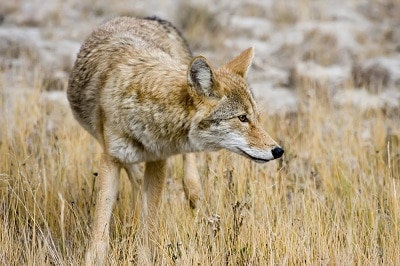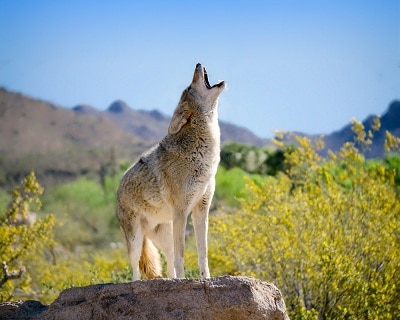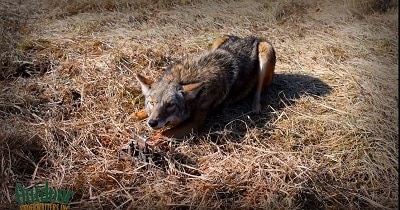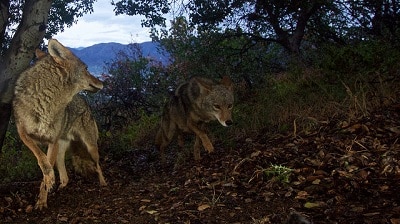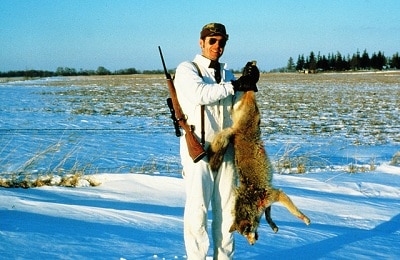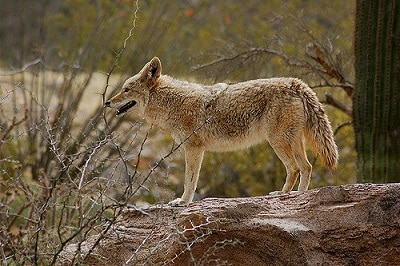When a coyote is becoming a nuisance on your property, the time comes when the only sensible option is to shoot it. But how to lure the poor bastard in to range, and keep him there long enough to get the shot off?
The preferred way to do this is with bait.
There are a number of options available that will suit the cause just fine, but a few stand out from the rest.
DO NOT buy bait from a store, as coyotes have become smart enough to recognize unnatural items. It’s important to be conniving to be effective.
Here are the best coyote bait for on property hunting.
Best coyote bait
The ideal coyote bait is the remains of a live animal.
The bigger and meatier, the better.
This can be tough, but keep an eye out for squirrels and other scurry animals that may be on the property.
It is encouraged to keep small animals and smaller bait options around for spells when there are many coyotes or little large bait.
They make decent bait in a pinch.
There are, however, a handful of better options. Let’s take a look at them.
Here is a video of baiting coyotes. But first, you need to know how to find coyote
1. Pigs or hogs
Hogs make a good coyote bait because of the smell and the fact that they act as a meat source.
The problem with dead hogs is that they can be difficult to come by. Your best bet is probably to ask a hog farmer if he has any meat available for you. Perhaps he will have a rotten hog carcass that he is willing to part with, or at least part of one. It isn’t necessary to have an entire hog, especially if you are only hunting one or two coyotes. They will be lured by the sheer fact that there is meat available that they didn’t have to work for.
2. Deer carcass
The best coyote bait is a deer carcass.
Coyotes are naturally attracted to everything about it, and will be lured in by the smell of a dead animal.
Deer carcasses have the benefit of being generally larger than most other live animal coyote baits available. This can confuse the coyotes, which is a good thing because they won’t suspect that it is a trap.
If there is frequent roadkill in the area, that can be a great source of deer carcasses.
Note: It is important to check local law to make sure that this practice is legal in the region.
It would be terrible to receive a citation for hauling a deer carcass when all you’re trying to do is hunt coyotes.
Another downside of deer carcasses, because of their size, is that it often takes more than one person to haul, relocate, and stage the dead deer. Other than that, deer are the best coyote bait for most situations.
You can also use meat or parts of an animal that you hunted yourself that aren’t being used. Any responsible sportsman is all about using every part of an animal they kill, and this offers an opportunity to do just that. Granted, another animal is going to be killed, but you can use that one as well or have it be feed for vultures or other wildlife.
3. Afterbirth
If you’ve got access to a farm or are a farmer yourself, horde the afterbirth from baby calves.
There is nothing that attracts coyotes by smell better than afterbirth. It is completely disgusting, but don’t actually touch it. Store in secure container and leave out at night.
When the hunt is ready, the stench will have already filled the air and attracted any coyotes in the nearby area. The downside here is that you have to use it right away, because who the hell wants to store afterbirth on their property? The timing is the issue that prevents this from being the best coyote bait. This scenario only works if your calves are born at the same time as you are needing to hunt coyotes on the property.
5. Beavers
We can’t condone illegal use of beaver for bait. But if access to a beaver corpse is doable, beaver can make a great option. Coyotes view beaver as a treat, something they don’t dine on every day, and will be willing to take more risks for the satisfaction than they would for other, smaller prey like rabbits.
This gives the opportunity to place the bait in a more ideal location for the hunter. Bring them in a little closer, and take the shot before the coyote is able to haul off the bait.
6. Where to place the bait
This is one of the most important factors in coyote hunting.
The bait must be placed in a location that:
- a) attracts the coyotes without tipping them off that it’s a trap, and
- b) is convenient for the hunter to target and shoot them while they’re there
In order to find the perfect location for coyote bait, first analyze your shooting location.
Is it well hidden? In a trench, or elevated? What kind of angles are you dealing with, and what are the weather factors? Make note of these, and then walk the perimeter of the area.
The goal is to find a spot that doesn’t require any movement on your part to get the shot off. If the coyote bait can be staged in an open area, or at the crest of a berm, the shot will be easier.
If the problem is that there are no open areas, consider cleaning out a spot or shifting the hunting field altogether (if possible).
I recommend you should bring the best ar bipod in coyote hunting. It will help you.
Conclusion
There are many other options when it comes to coyote bait.
But these four are the best options.
They aren’t always going to be available, so it’s best to be able to find bunnies, squirrels, geese, etc. to use in situations where larger bait is absent. As always, be sure to follow any local laws and practices for coyote hunting.
They may be a nuisance, but so is a hefty fine or punishment.
If you’ve enjoyed this article, please blast it out on your social channels. Have any tips on best coyote bait? Leave them in the comments below!
